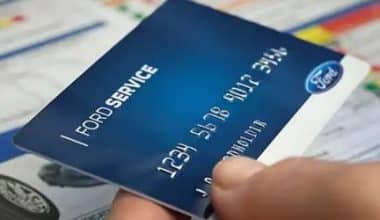You can choose the best mortgage plan if you know the difference between the principal and the interest. To be clear, the principal is the total amount of money you borrowed for your home loan, and the interest is the amount you pay back every month for the privilege of using the principal. This article will help you understand more about the P&I mortgage payment calculator and what you owe and what you’ll pay on your mortgage.
What Is a Principal?
The principal is the initial loan amount that you must repay in a mortgage. The loan principal is $240,000 if you put 20% down ($60,000) on a $300,000 home.
What Is Interest?
Interest is the extra payment you make to a lender in exchange for using their money. Interest is also calculated as an annual percentage rate applied to the initial loan amount. Simply put, a higher interest rate will result in higher total payments. You can get a loan with a fixed interest rate that won’t change unless you refinance, or you can get one with an adjustable rate that can go up or down (changing with market interest rates and other factors).
What Does P&I Mean by Mortgage?
Principal and interest, or P&I, refers to the amount of money you pay each month in order to bring a mortgage up to date. Early on in the loan term, a big chunk of your monthly mortgage payment goes toward P&I.
How Is P&I Calculated on a Mortgage With the Mortgage Payment Calculator?
With the P&I Mortgage Payment Calculator, it will be easier to calculate. Hence, for the calculation of the P&I portion of your mortgage payment, you’ll need three pieces of loan information:
- The loan’s principal, or the amount borrowed.
- The loan’s annual percentage rate.
- The length of the loan term is in months. A 30-year loan lasts 360 months, while a 15-year loan lasts 180.
PMT is your monthly payment in the formula that follows. However, P denotes the principal amount, n is the number of months, and r is the monthly interest rate. Take the annual rate, convert it to a decimal, and divide it by 12 to get the monthly rate. Also, assume the annual interest rate is 6%. When you convert it to a decimal, you get 0.06; 0.06/12 = 0.005 when divided by 12.
The equation is: PMT = P [r (1+r)n] / [(1 + r)n – 1].
Example: using the P&I Mortgage Payment Calculator
Assume you borrow $200,000 for 30 years at 6% annual interest:
- P = $200,000
- r = 0.005
- n = 360
Putting the numbers in:
The PMT = 200,000 x [0.005 x 1.005360] / [1.005360 – 1]
PMT = 200,000 x [0.005 x 6.0226] / [6.0226 – 1]
The PMT = 200,000 x [0.0301 / 5.0226]
PMT = $1,199.10
Knowing the components of the formula will allow you to use the P&I mortgage Payment calculator to quickly and easily determine your monthly payment. However, just put in the loan’s principal amount, interest rate, and length of time (in years), which is usually the annual interest rate.
How Much Interest Will I Pay on My Mortgage Over 30 Years?
Several variables determine your loan interest rates. Interest rates can vary depending on a number of factors, including a borrower’s credit history, income, down payment, and the property’s location. You can also save tens of thousands of dollars in interest payments over the course of your loan term if you take the time to improve your credit score if you know your credit history isn’t that great. Let’s examine a sample.
Let’s pretend you’re debating between two different loan companies. One lender gives you $150,000 with 4% interest over 30 years. The alternative lender also proposes a 30-year loan for $150,000, but their interest rate is 6% lower.
With the first lender, your interest payments will add up to $107,804.26 by the time you’ve paid it off. However, the total cost comes to $173,757.28 if you go with the second lender. For this example, an increase in interest of just 2% would add over $65,000 to the total cost of the loan.
What Is Net Pay?
Take-home pay, or net pay, is the amount an employee receives after taxes and other deductions have been subtracted from their gross pay.
What Is In Your Monthly Payment?
Mortgage payments typically consist of P&I . It’s possible that your loan will require you to pay more than just the monthly interest and principal payments. Keep in mind that most mortgage lenders will determine your maximum loan amount based on the sum of the principal, interest, taxes, and insurance (PITI) payments you make each month.
#1.Taxes
Property taxes are something that every homeowner must deal with, no matter where they call home. One of the most expensive and often overlooked costs of home ownership is taxes. Public services such as police, fire departments, and libraries can only exist thanks to the money collected from property taxes.
The value of your home and the quality of local services and amenities determine the amount of property tax you will pay. It is in your best interest to have an appraisal because the results will be part of your property’s tax assessment that the local government will use. In order to keep up with the ever-changing value of your home, which shows in your annual tax bill, your country may require a recent appraisal every few years.
#2. Insurance
Buying homeowner’s insurance is optional and not required by law. However, mortgage banks typically won’t approve borrowers without proof of insurance. In the event of a disaster, such as a fire, a break-in, or a lightning strike, homeowner’s insurance will cover the costs associated with repairing or replacing your home. If you live in an area prone to flooding or earthquakes, you may want to consider purchasing additional coverage.
Furthermore, if you have something extremely valuable that you want to cover, you may need to purchase a “rider” for your homeowner’s insurance policy. You can also add a rider to your homeowner’s insurance policy to protect valuables like jewelry and artwork that are not included in the standard policy’s limits of liability. Therefore, depending on the terms of your policy, you may only be able to claim a set amount for losses sustained in a single category.
#3. Escrow
An escrow account is a money set aside each month by your mortgage lender in case of unforeseen expenses. Therefore, the money you need to pay for insurance and property taxes is kept in an escrow account. Lenders will also collect and make these payments on your behalf to guarantee timely premium and tax payments.
However, your escrow payment will be calculated based on your property’s tax and insurance rates. Each time your tax or insurance rates fluctuate, your lender may reevaluate the amount you need to put into your escrow account.
Calculating Taxes and Insurance
Records of property tax payments are typically kept by a county assessor or a comparable office and are available to the public. Moreover, you can check the assessor’s website or have your real estate agent look up the property you’re interested in. To calculate the monthly installment, take the total annual tax and divide it by 12.
Also, learn how much it would cost to insure the house for a year by consulting with an insurance professional. Without an agent, it’s important to shop around for prices. When you have a total, divide it by 12 to get your insurance premium cost per month.
Example: Let’s pretend that your annual property tax bill is $3,000 and your insurance premiums come to $900. A total of $3,900 has been accumulated. Once you break that down over a year, you get $325 per month to cover things like taxes and insurance. Your PITI payment is the sum of your principal and interest payments plus your tax and insurance premiums. For this case, we’d need to set aside $1,524.10.
Private mortgage insurance (PMI) is insurance against default on a mortgage loan that may be required by your lender. However, this policy. For borrowers with low credit scores or low down payments, this is usually a necessity. The payment PMI premium is monthly in addition to the PITI premium.
Homeowners’ association (HOA) fees may be paid through escrow alongside your property taxes and insurance premiums, if applicable to your new home. However, you can calculate the monthly HOA fee by dividing the annual fee by 12. This fee will be added to the PITI and PMI already included in your mortgage payment (if applicable).
Key Takeaway
- P&I makes up each month’s mortgage payment. However, the money you borrow, known as the principal, is what you owe the lender.
- Mortgage payments typically consist of more than just the loan principal and interest. Your lender may use an escrow account to store a portion of your monthly payment if this is the case.
- The amount you owe on your mortgage is likely to be consistent each month. However, your payment amount may change if you opt for a mortgage with an adjustable interest rate or if you prepay a portion of your loan.
- Beginning the mortgage application process early in the home-buying process is recommended. Get the ball rolling on your mortgage application right now.
FAQs
How can I avoid paying PMI?
Making a down payment equal to at least one-fifth of the home’s purchase price is one way to avoid paying PMI.
How do I get rid of P&I?
Make principal payments on your home mortgage, revisit the valuation and see what’s changed. If you want to save money, refinance your mortgage.
How long do I have to pay PMI?
Once you’ve purchased your home, you can usually request to stop paying PMI once you’ve reached 20% equity.
Related Articles
- Escrow Agent: A Simplified A-Z Guide (+ Updated Sample)
- Escrow on a Mortgage: Understanding the Escrow Process & Requirements
- WHAT IS ESCROW SHORTAGE? Causes & How To Avoid It
- ESCROW SHORTAGE: What It Is And How To Fix It
- HOW TO PAY OFF MORTGAGE IN 5 YEARS: A Comprehensive Guide






